

We may earn revenue from the products available on this page and participate in affiliate programs. Learn More ›
There is a wide assortment of glues, cements, and epoxies at your local hardware store that are designed to work with specific materials in certain situations. It’s best to know which is the proper adhesive for the task at hand. No single type of glue is right for all projects, and using the wrong one can turn your project into a sticky mess.
Choosing the wrong adhesive can also cause a repair to fail. “If the wrong glue is selected, then the consumer would not be able to adhere the components together. This may mean that the finished product will break, crack, or completely fall apart during usage,” says Lien Phun, senior R&D manager at Newell Brands, makers of Krazy Glue and Elmer’s.
“When it comes to choosing the best adhesive for any application, the first question to ask is what substrates will be bonded,” says Kate Piche, director of product marketing, adhesives at DAP. “Substrate compatibility and required bond strength and durability are important factors in achieving a solid bond. Specific needs such as gap filling or exposure to weather or water will limit the selection of adhesives that will work as well. After that, the choice of adhesive comes down to the finished appearance and ease of use.”
What’s the difference between glue and epoxy, and why are there so many types of adhesive cements? Our helpful guide breaks down the differences between these sticky products, and will help you decide which types of glue you should keep on hand for common household repairs.
1. Clear Epoxy

Clear epoxy is often the best choice for fixing glass. Because it’s nonporous, glass can be tricky to glue back together. Any repair larger than a small chip, which you can fix with a drop of super glue, requires a high-quality clear epoxy. Look for “crystal clear” on the label so you don’t end up with repair seams that yellow over time.
Pro Tip: For the best bond when using epoxy to repair glass, first use degreaser to clean the surfaces of the glass, and then sand the edges slightly to roughen them. Apply glue sparingly to avoid oozing.
Best For: Repairing damaged areas in glass that are larger than a small chip.
Our Recommendation: Gorilla Clear 2-Part Epoxy (2-pack) at Amazon for $10.18
Clear Gorilla 2-part epoxy is a good choice for glass repairs because it adheres well to glass, dries crystal clear, and creates a strong bond.
2. Two-Part Epoxy
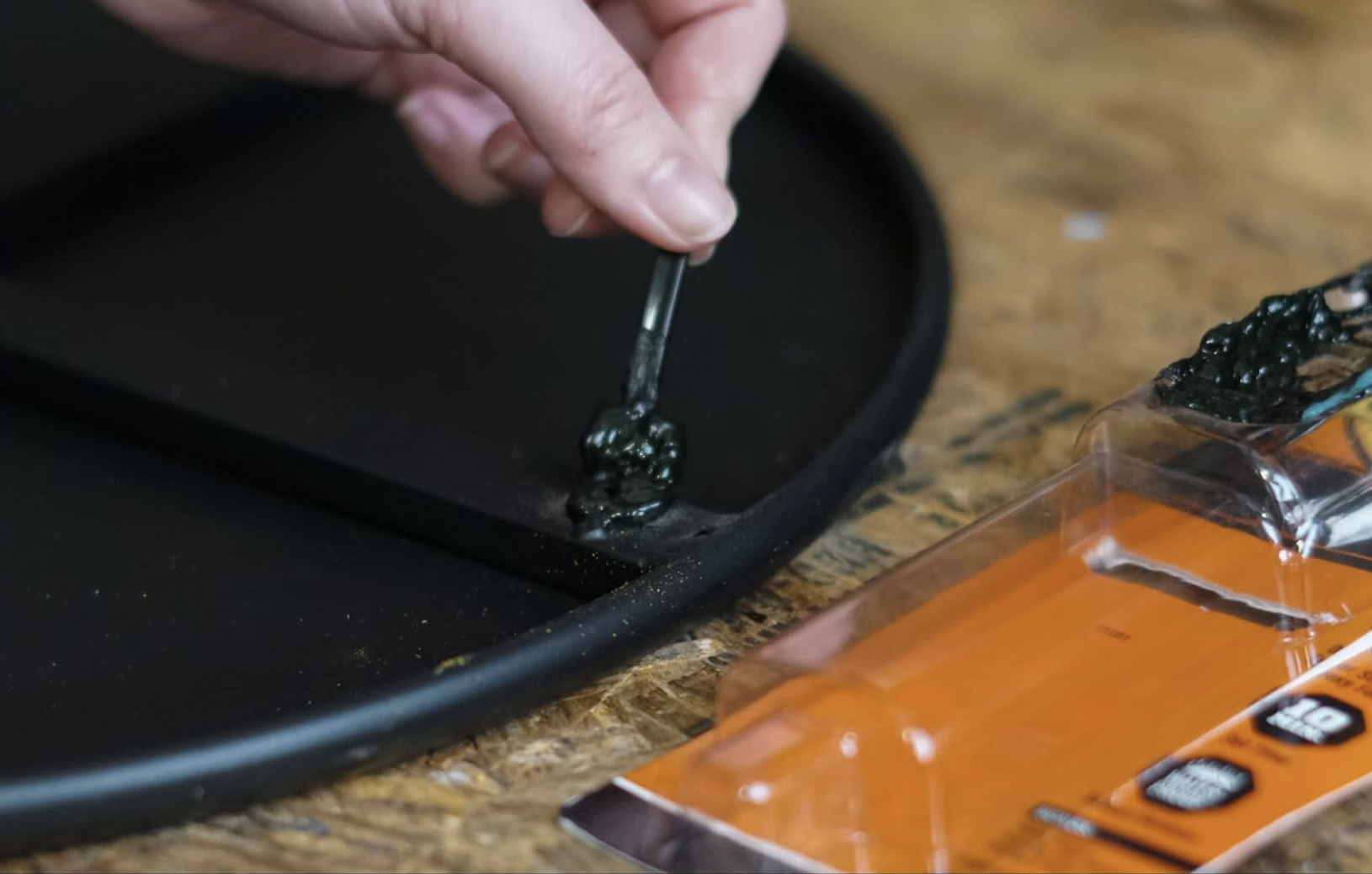
Whether you’ve knocked the handle off your favorite coffee mug or you’re trying to reassemble grandma’s treasured vase, you’ll get the best results if you use a fast-cure, two-part epoxy. A two-part epoxy is often packaged in what looks like a double-barreled syringe: One side contains epoxy resin, the other side a hardener.
One of the advantages of using this adhesive is that it sets quickly—and when you’re repairing ceramic objects, which often break into oddly shaped pieces that are tough to hold together, that’s a good thing. Two-part epoxy is also successfully used as a concrete glue and to glue metal to wood. There are many types of epoxy on the market for a variety of applications, so check the label to make sure you’re choosing the best epoxy for your needs.
Pro Tip: When repairing an item with thin edges, try applying the epoxy with a toothpick. If you accidentally get epoxy on the surface of your item, wait until it hardens completely, and then carefully scrape the excess away with a razor blade.
Best For: Repairing ceramic figurines and mugs, as it sets quickly and forms a solid bond.
Our Recommendation: Gorilla Epoxy Ultimate at Amazon for $9.99
This two-part epoxy has a 10-minute set time and creates a waterproof bond for metal, plastic, ceramic, and concrete.
RELATED: The Best Glues to Repair Your Most Treasured Ceramics, Tested
3. Mastic or Thinset Mortar
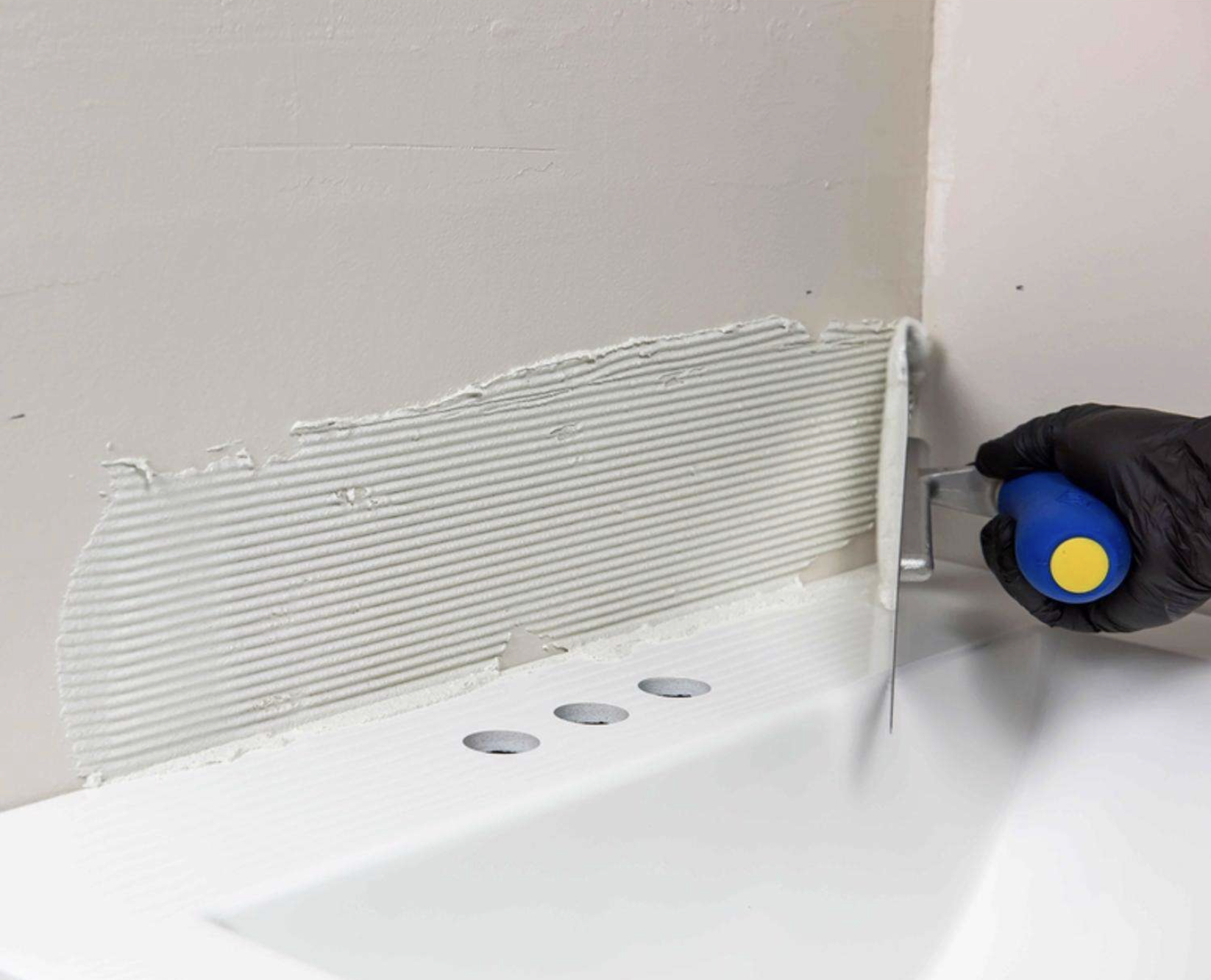
Loose tiles are often the result of an installer using too little adhesive. If a wall tile comes loose, try to match the original adhesive. To do this, take a close look behind the loose tile. If the adhesive looks like dried glue, it was probably mastic. If it looks like cement, premixed thinset was used. Also consider where the tile is located: Mastic is generally used in dry locations, while thinset can be used in areas that get wet, such as bathrooms and kitchens.
Pro Tip: Chip away old grout from around the tile you’re reattaching, and use tile spacers for the most exact and consistent alignment. Wait until the new adhesive cures completely before regrouting.
Best For: Replacing loose tile on walls.
Our Recommendation: SimpleSet Pre-Mixed Thin-Set Mortar at Amazon for $17.32
A premixed thinset makes a job take less time and removes the guesswork involved in the mixing process.
RELATED: Don’t Mess Up This First Step When Tiling a Floor
4. Wood Glue
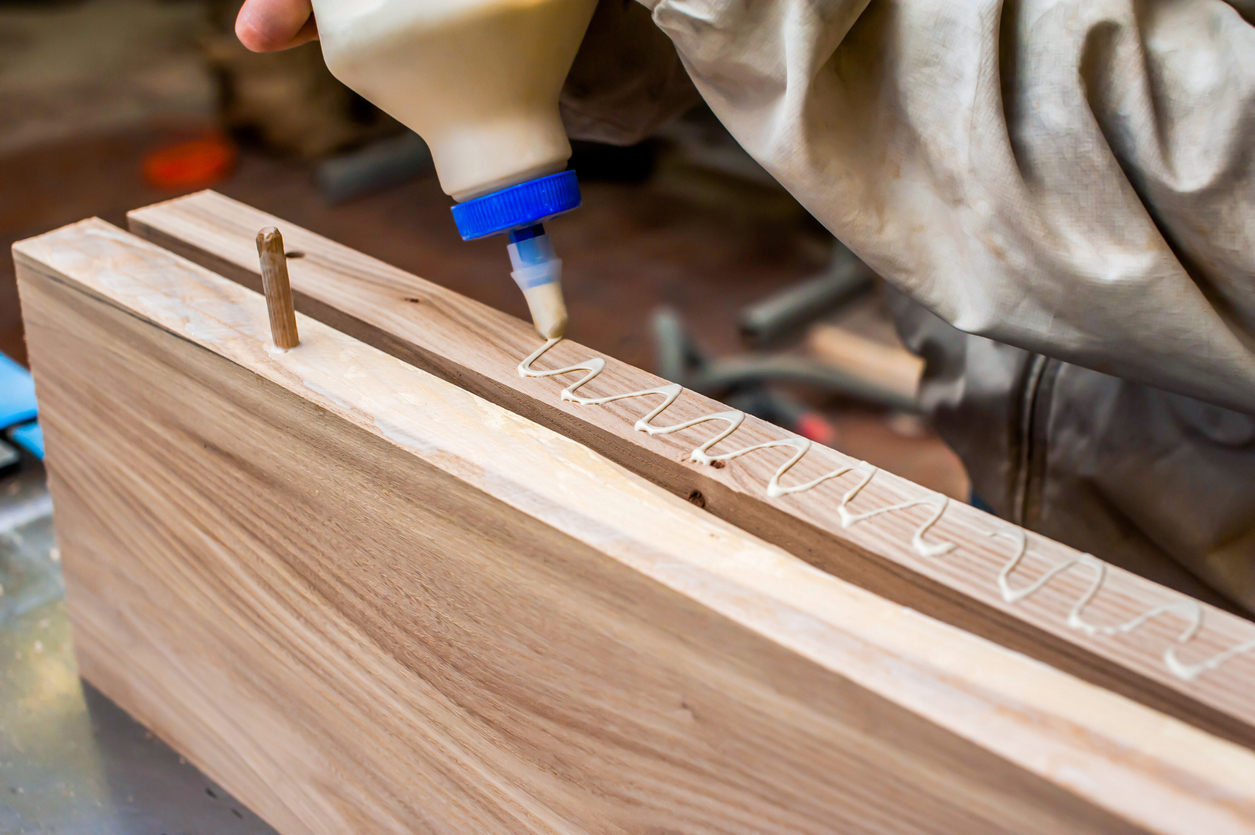
Among the types of adhesives available, wood glue is obvious about its intended use. It’s a good glue to keep on hand, as there is usually at least one wood repair lurking in almost every home: a stool so rickety that no one dares sit on it, or a picture frame that gapes at one corner. Wood glue—the yellow brother of school glue—is inexpensive and provides a tight bond. Standard wood glue is for interior repairs; look for “exterior” on the label if you’re repairing patio furniture or a loose porch railing.
Pro Tip: Wood glue cures slowly, so use clamps or weights to hold the pieces together until the glue sets.
Best For: Repairing wooden items like picture frames and wood furniture.
Our Recommendation: Elmer’s Carpenter’s Wood Glue on Amazon for $6.99
With easy soap-and-water cleanup and 20- to 30-minute clamp time, this nontoxic wood glue is perfect for wood repairs around the house.
5. All-Purpose Cement
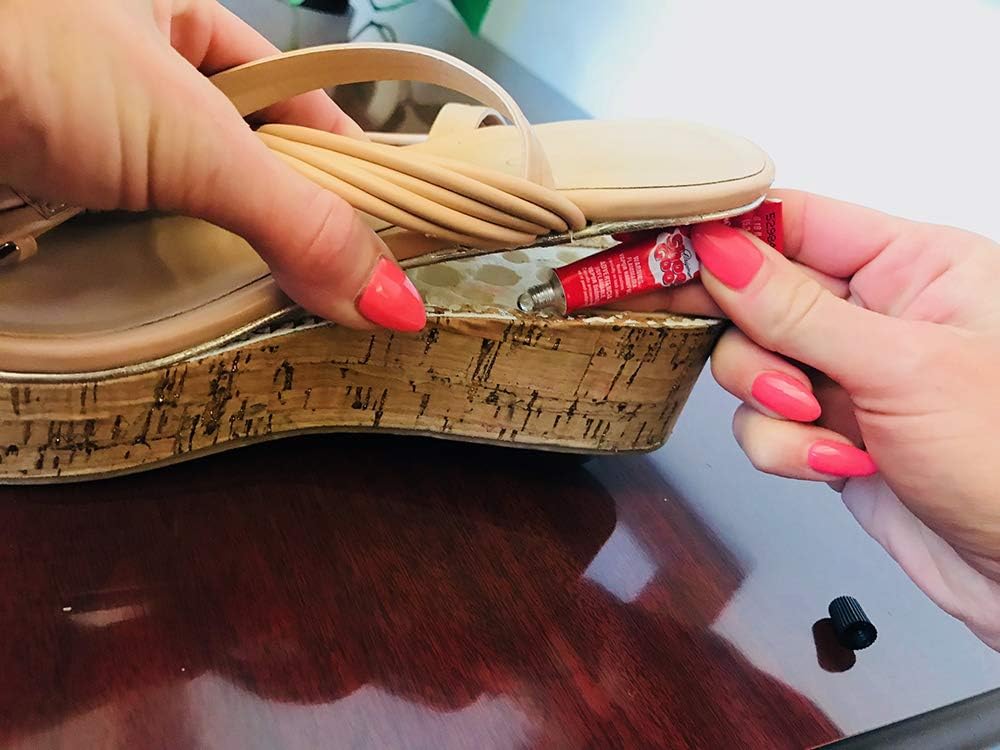
For gluing down loose leather on trunks, lamps, or briefcases, choose a high-quality all-purpose cement. “Leather needs a tough adhesive with a lot of flexibility,” Piche says. “While high-durability super glue might work for minor touch-ups, it’s not a viable long-term solution.” For a lasting leather repair, she suggests opting for a contact cement or solvent adhesive designed for use with leather or rubber, such as Weldwood Contact Cement or Shoe Goo. “These adhesives are closer to the adhesive formulas used in leather manufacturing and will make for a durable, long-term repair,” she notes.
All-purpose cement is typically sold in a metal can with a brush attached to the inside of the lid. Make sure the label states that the cement is suitable for use on both leather and the material you’re attaching the leather to, such as wood or metal.
Pro Tip: As with all contact-type cements, wait until the adhesive dries to a tacky state before pressing the surfaces together.
Best For: Leather repairs and touch-ups, such as fixing loose leather on shoes.
Our Recommendation: DAP Shoe Goo on Amazon for $8.15
Designed for shoe repairs, DAP’s Shoe Goo bonds, patches, and protects against water.
6. Contact Cement
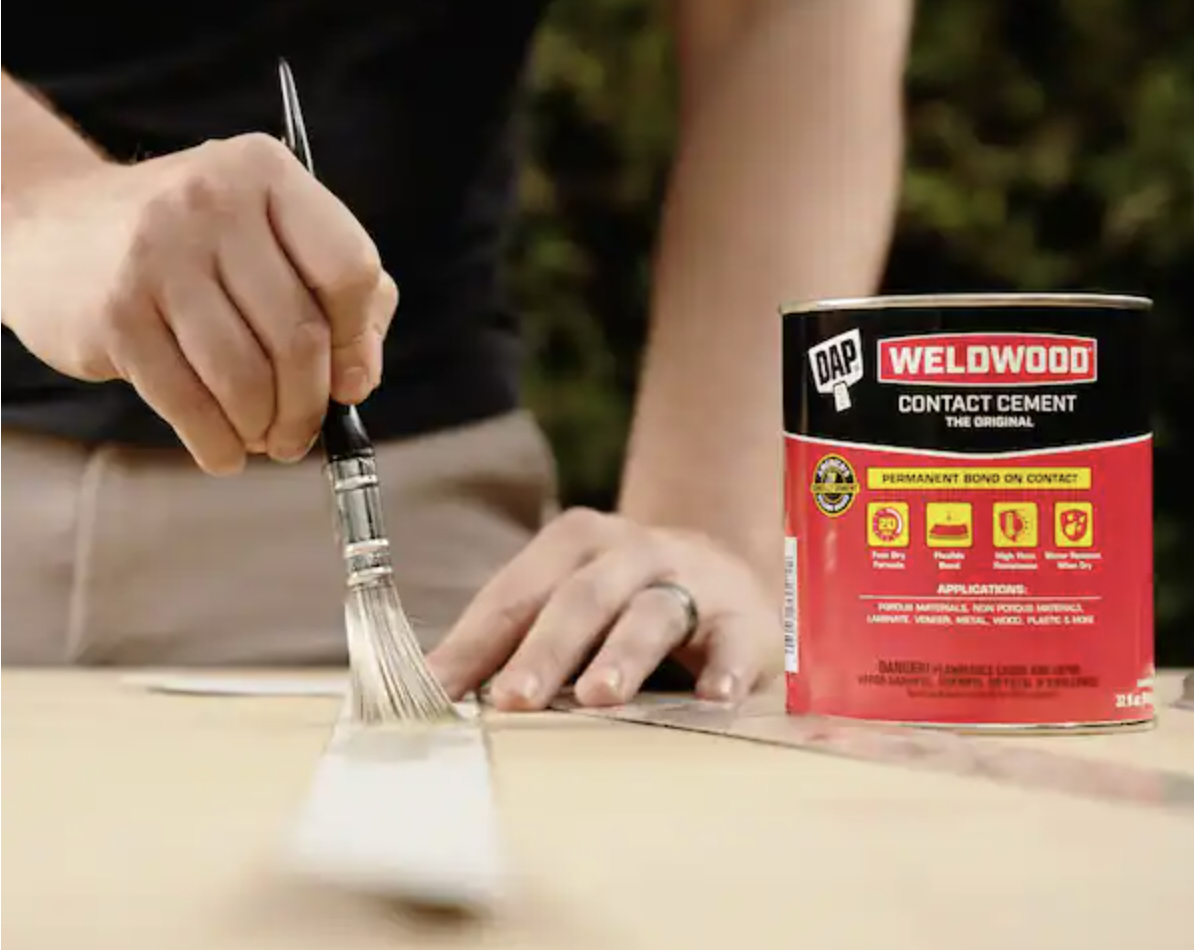
End caps on laminate countertops are notorious for working loose and then catching on clothing when you walk by. If the particleboard backer beneath the laminate is in good shape, you can reattach the laminate with solvent-based contact cement, which works effectively with both porous and nonporous materials.
Pro Tip: After applying a thin, even coating to both surfaces, wait until the cement is tacky but not wet before pressing the pieces together.
Best For: Reattaching laminate that has peeled away.
Our Recommendation: DAP Weldwood Contact Cement at The Home Depot for $11.48
DAP’s Weldwood contact cement is a perennial favorite of DIYers and pros. The neoprene-based contact cement provides a quick grab on laminate, leather, wood, rubber, and more.
7. Polyurethane Glue
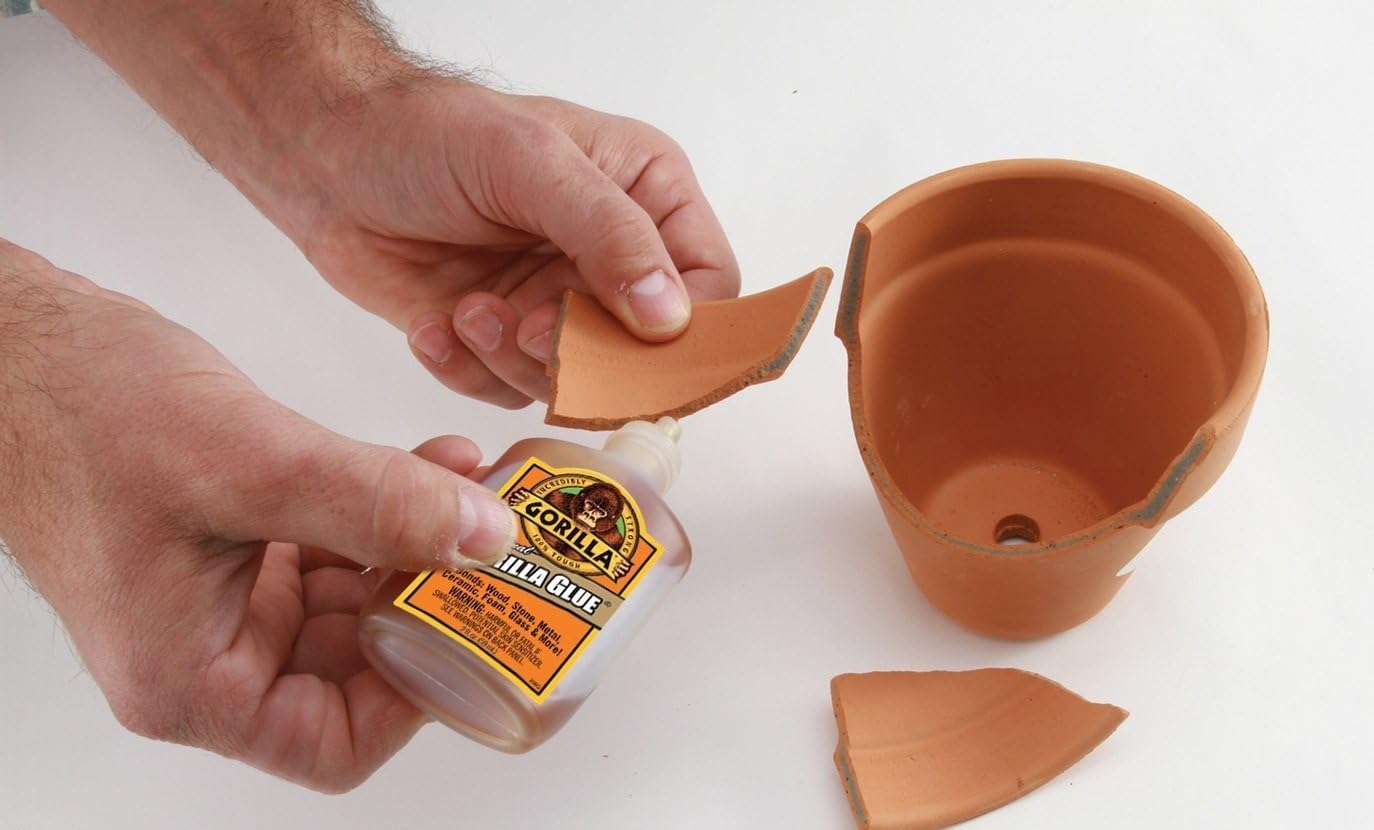
Relatively new to the world of adhesives, polyurethane glue is a rising star, and any home or workshop is better prepared with a bottle on hand. Sold under various names, polyurethane glue expands slightly as it cures and forms a strong bond on many materials, including metal, masonry, concrete, fiberglass, and rubber.
Pro Tip: To avoid oozing, use a little less polyurethane glue than you think you need. Clamping is necessary until the glue cures completely.
Best For: A bonding glue for rubber, concrete, masonry, and fiberglass.
Our Recommendation: Gorilla Glue Polyurethane Glue on Amazon for $12.48
As it cures, this versatile and waterproof glue expands up to three times its dispersal amount, filling in gaps and strengthening the bond.
8. Modified Silane Hybrid Adhesive
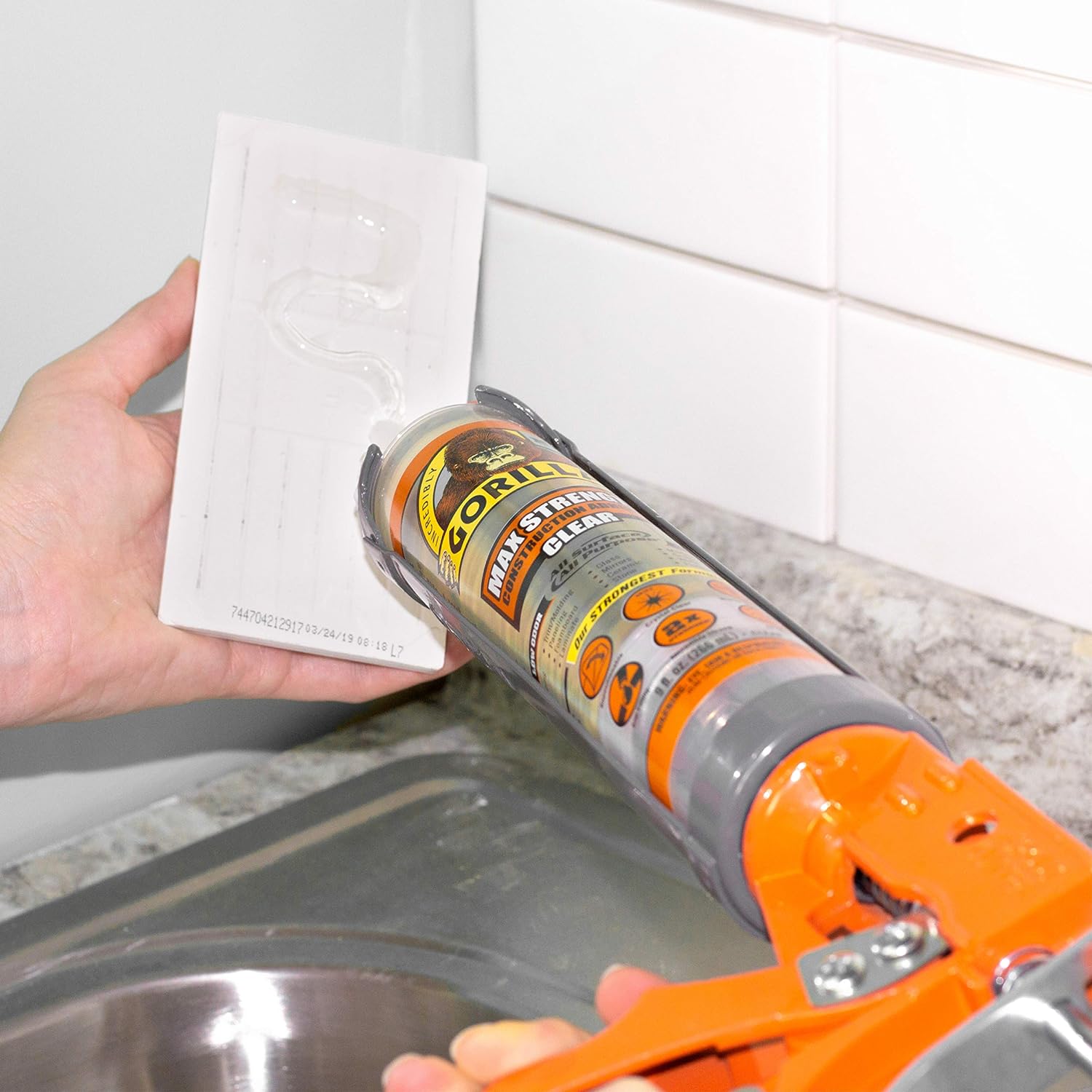
A type of glue that’s been around for about 40 years, modified silane hybrid adhesives react with moisture to cure and form an elastic bond. They can be painted and are resistant to UV rays. Often used for vehicle glass, solar panels, and windows, this type of adhesive can be the best glue for plastic, metal, and ceramic. However, when working with glass, make sure to choose a clear modified silane adhesive.
“It is usually important on rigid glass for the bond line to be unnoticeable. Clear Gorilla Glue is a great recommendation for adhering glass that dries crystal clear and has a strong bond,” says Chad Forsthoefel, technical director at Gorilla Glue.
Best For: Repairing joints between glass, metal, and plastic.
Our Recommendation: Clear Gorilla Glue on Amazon for $6.98
This water-resistant clear glue offers a strong hold for almost every type of surface after 2 hours of clamping and 24 hours of curing.
9. Super Glue (Cyanoacrylate)
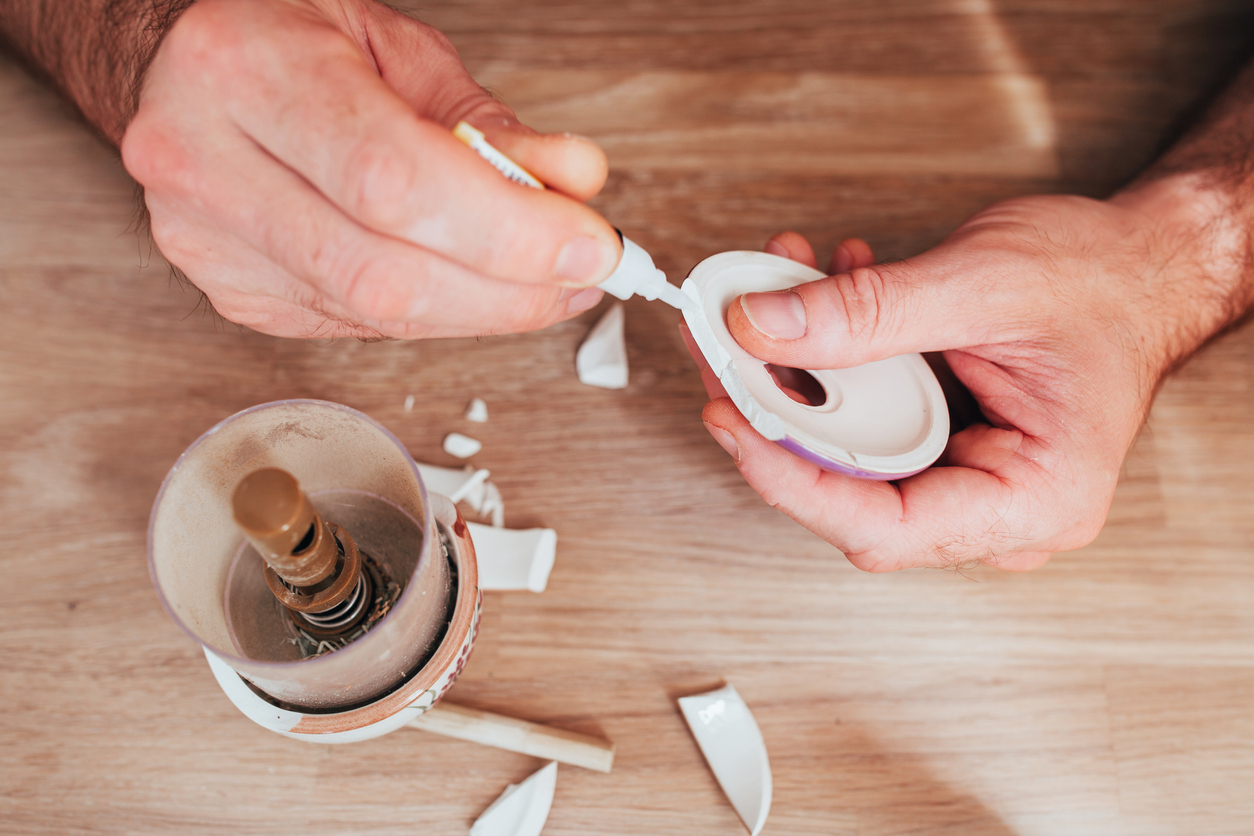
While most refer to this fast-acting adhesive as super glue, it’s technically called cyanoacrylate. Made of an acrylic monomer, it transforms from liquid into a plastic state after curing is complete.
“For glass, ceramic, and leather surfaces, we recommend a cyanoacrylate-based adhesive, such as Krazy Glue,” says Phun, senior R&D manager at Newell Brands. Piche of DAP agrees that cyanoacrylates, when applied correctly, are the quickest and simplest option for these surfaces. “It’s important to remember not to use too much,” she cautions, “as a little goes a long way. If you’re fixing something that will be exposed to the elements, like a planter pot, be sure to select an outdoor-grade super glue.”
Super glue is also able to bond to metal, plastic, and skin, so be careful when using this type of adhesive.
Pro Tip: Super glue can be a handy helper if you need to attend to a clean cut and there’s no first aid kit nearby, according to the Mayo Clinic Health System.
Best For: Quickly bonding small chips in ceramic or repairing a variety of materials, from leather to glass.
Our Recommendation: Krazy Glue on Amazon for $7.77
One of the strongest super glues on the market, this adhesive requires only a small amount to create a strong bond within 60 seconds.
RELATED: The Best Super Glues, Tested
10. Hot Glue
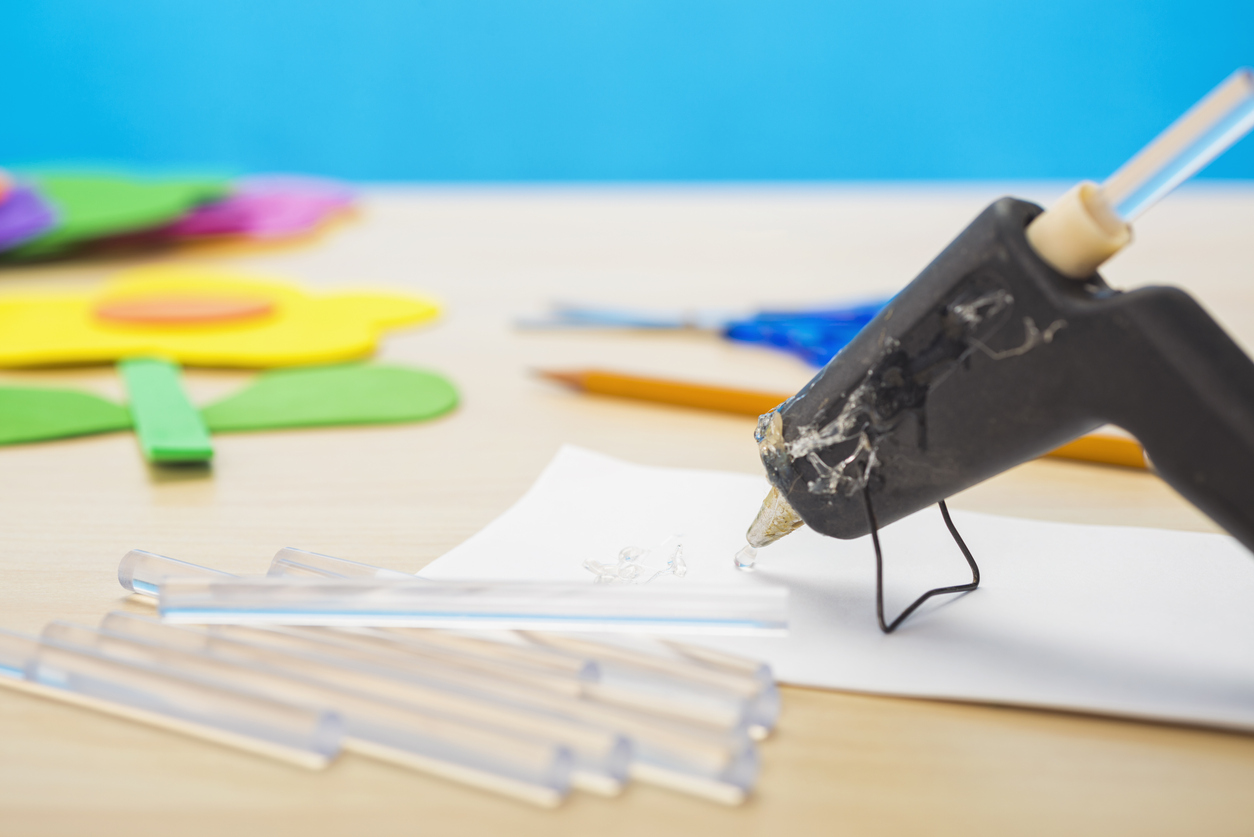
A must-have for many crafters and DIYers, hot glue, which is sold as sticks, makes for easy fixes and quick creations. When used with a hot glue gun, hot glue melts to form a bond within a minute and is ideal for crafting wreaths, hemming curtains, or fixing a stripped screw. Note that hot glue sticks aren’t one-size-fits-all; you need to purchase sticks that fit your particular glue gun. To add flair to your projects, hot glue sticks are available in a rainbow of colors too.
Best For: Craft projects and simple fixes around the house.
Our Recommendation: Gartful Colored Mini Hot Glue Sticks on Amazon for $11.99
For a mini glue gun, this 12-color collection of hot glue sticks offers crafters plenty of options for designing vibrantly hued creations.
RELATED: The 11 Handiest Ways to Use a Hot Glue Gun
11. Spray Adhesive
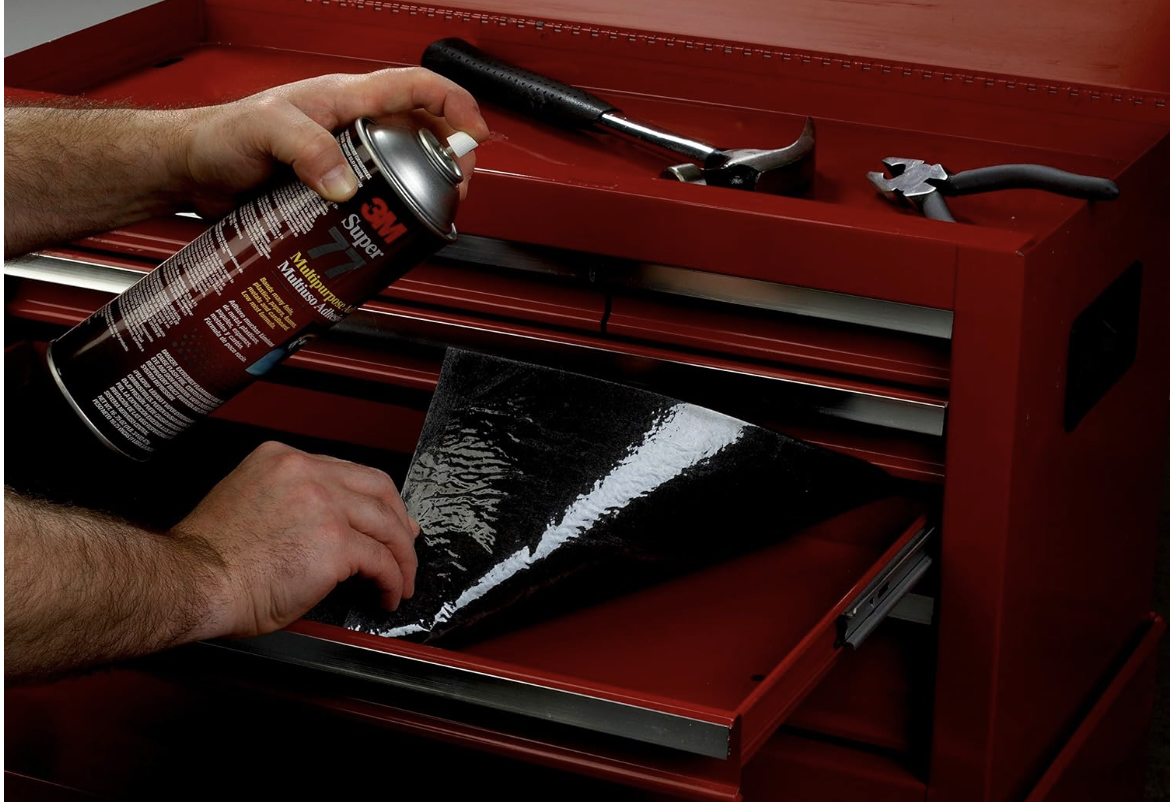
When a light coating of glue is needed, apply a tacky mist from a pressurized can of spray adhesive. This common artist and crafter glue doesn’t cause wrinkling or bleed-through. As some types are repositionable, spray adhesive can be more forgiving for those who may need a little extra time finessing the placement of an item. If air quality is a concern, look for an option with low or no VOCs.
Best For: Crafters or artists who want an invisible bond for paper or fabric.
Our Recommendation: 3M Super 77 Multipurpose Low-VOC Spray Adhesive on Amazon for $12.48
Quickly bonding paper, plastic, fabric, and more, this multipurpose spray adhesive dries clear and is low VOC.
12. Silicone Adhesive
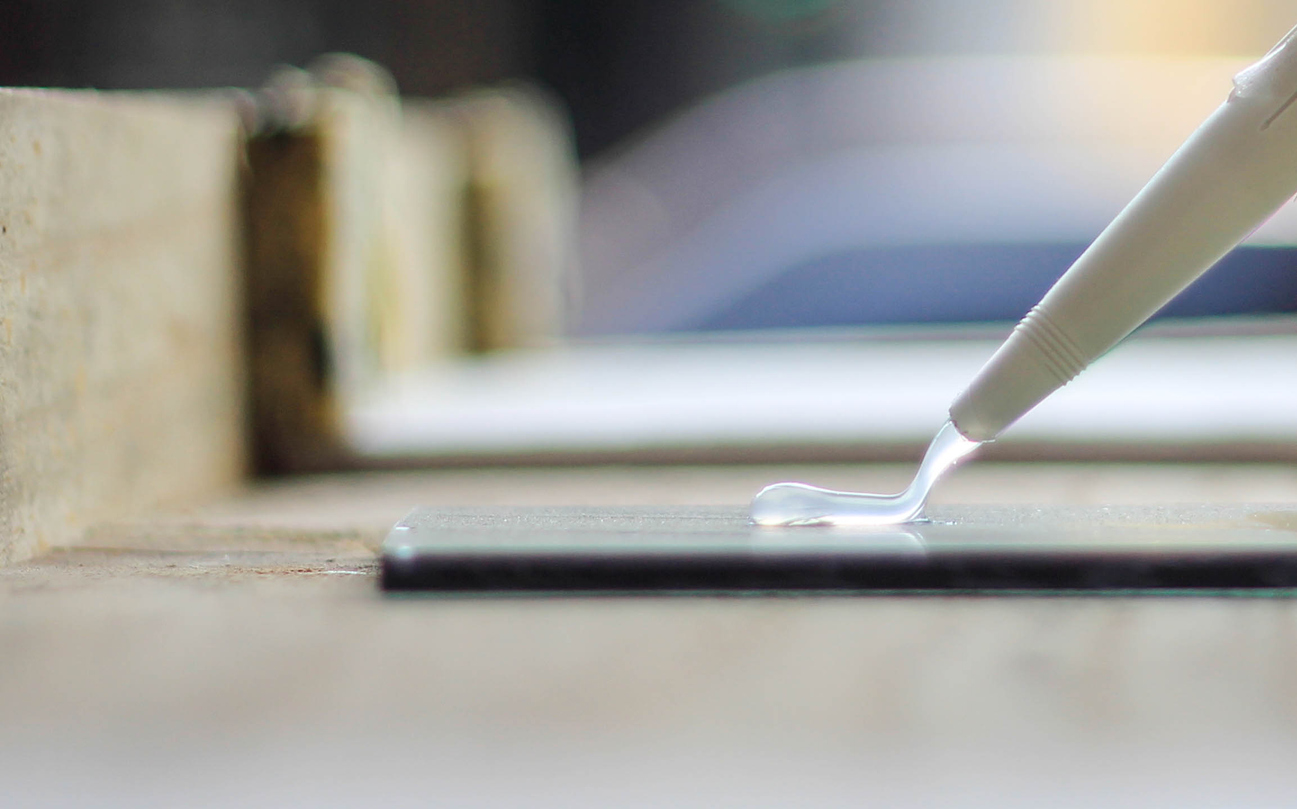
Used for repairs around doors, windows, bathtubs, and trimwork, silicone adhesive is often confused with silicone caulk. Silicone caulks are finishing elements that are more like a paste and more elastic than silicone adhesives, which are used for primary bonding. Both are more durable, waterproof, and flexible than water-based acrylic caulk. But unlike acrylic caulk, silicone-based adhesives and sealants can’t be painted.
Best For: Small repairs around doors, windows, tubs, and windshields.
Our Recommendation: J-B Weld All-Purpose Silicone Sealant and Adhesive on Amazon for $6.95
A useful adhesive, this all-purpose silicone-based product provides a 1-hour set time, dries clear, is waterproof, and doesn’t shrink.
13. Rubber Cement
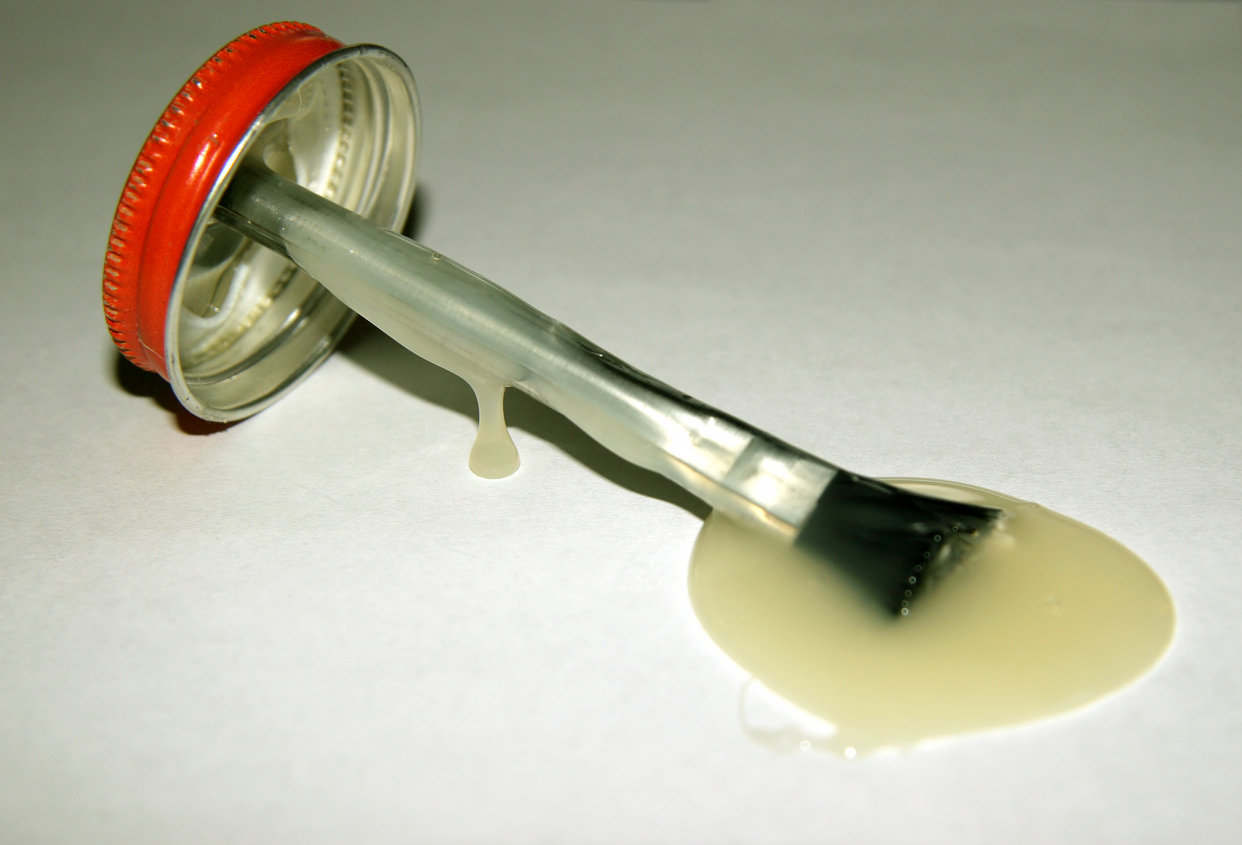
An adhesive that many kids grew up using in school, rubber cement gets its distinctive odor from its solvent-based formula. After the rubber cement is applied, the solvents evaporate, leaving behind an adhesive that forms a strong, flexible bond. Unlike contact cement, rubber cement can be applied on one or both surfaces of the items being glued. Because of its odor, use rubber cement in a well-ventilated space.
Best For: Crafters who need to tack up paper in a well-ventilated space.
Our Recommendation: Elmer’s Rubber Cement on Amazon for $7.76
Rubber cement offers an acid-free and photo-safe formula that’s repositionable for scrapbookers and crafters.
14. Pipe Cement
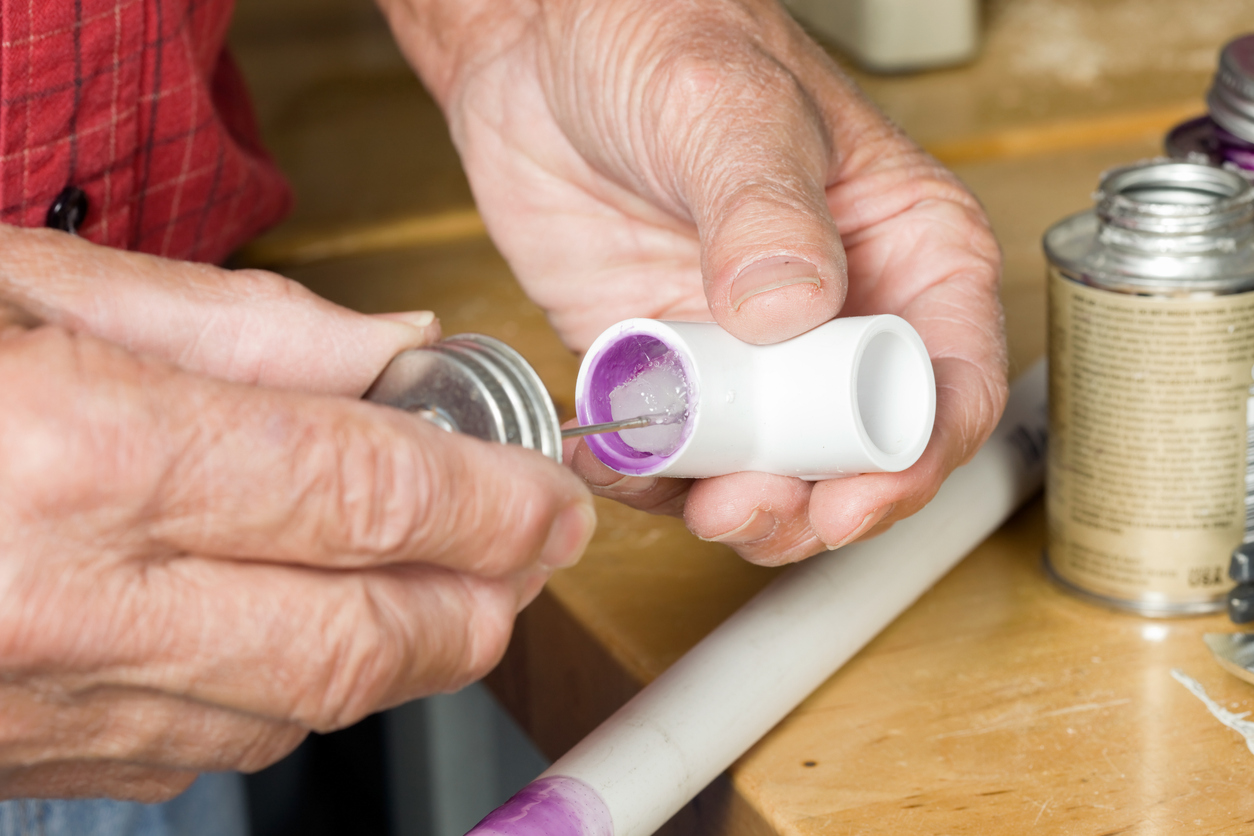
Also called PVC cement, pipe cement isn’t technically a glue. Instead, it achieves a bond through a chemical reaction between the cement and the pipe surfaces. A primer is often used to clean the surface before applying the pipe cement. A bond made with pipe cement sets within a few minutes, so it’s best to work quickly.
Best For: Joining PVC pipes and fittings, and fixing leaks and small gaps.
Our Recommendation: Oatey PVC Clear Cement and Primer on Amazon for $13.96
This twin pack of primer and PVC cement is certified UL Greenguard Gold and can be used for potable water.
15. Construction Adhesive

A versatile DIY staple, construction adhesive can reduce the need for fasteners in some nonstructural applications like wood paneling or other lightweight trimwork. It’s also helpful for small fixes like replacing a tile or applying laminate.
“There are certain larger projects or repairs for ceramic, such as tiles, where Gorilla Heavy Duty or Ultimate Construction Adhesive would be a good recommendation,” says Forsthoefel of Gorilla Glue. Similarly, Gorilla Max Strength Clear Construction Adhesive is a good option for applying laminate on a wood or engineered wood substrate. “After application from the tube or cartridge, this product can be spread thin and laminate applied,” he adds.
Best For: Replacing a tile, applying laminate, or bonding lightweight trimwork.
Our Recommendation: Gorilla Max Clear Construction Adhesive on Amazon for $11.83
Creates a strong bond for wood, ceramic, stone, and glass that’s waterproof and respositionable for up to 30 minutes.
